Can Koi Fish Eat Shrimp? A Guide to Safely Adding Seafood to Their Diet
This post may contain affiliate links.
Nutritional Benefits of Shrimp for Koi Fish
Shrimp offers excellent nutritional value for koi, making it more than just a tasty treat. These crustaceans are packed with high-quality protein that supports growth and muscle development in your fish. Protein is particularly important during warmer months when koi are most active and growing rapidly.
Beyond protein, shrimp contains essential omega-3 fatty acids that promote healthy skin and vibrant coloration in koi. The natural pigments in shrimp, particularly astaxanthin, can actually enhance the red and orange hues in your fish over time, making their colors more striking.
Shrimp also provides important minerals like calcium, which supports bone development, and phosphorus, which aids in energy metabolism. These nutrients complement a well-rounded koi diet and contribute to overall health.
Want to learn more about koi nutrition?
Discover how a balanced diet affects your koi’s health, growth, and coloration with our comprehensive nutrition guide.
Best Types of Shrimp for Koi Fish

When it comes to feeding shrimp to your koi, you have several options to choose from. Each type has its advantages and can be used in different situations.
Fresh Shrimp
Fresh shrimp offers maximum nutritional value and is highly palatable to koi. Look for uncooked, unseasoned shrimp without preservatives. While this option provides the most nutrients, it requires proper preparation and should be used immediately.
Frozen Shrimp
Frozen shrimp is convenient and nearly as nutritious as fresh. It can be stored for longer periods and thawed as needed. Always choose unseasoned, unbreaded varieties without added salt or preservatives. Thoroughly thaw before feeding to your koi.
Dried Shrimp
Dried or freeze-dried shrimp has a long shelf life and is easy to store. While some nutrients are lost in the drying process, it still provides good protein. These can be purchased at most pet stores specializing in fish supplies.
For the healthiest koi, rotate between these options to provide dietary variety. Commercially available koi foods that contain shrimp as an ingredient can also be a convenient way to incorporate this seafood into their regular diet.
How to Prepare Shrimp for Koi Fish
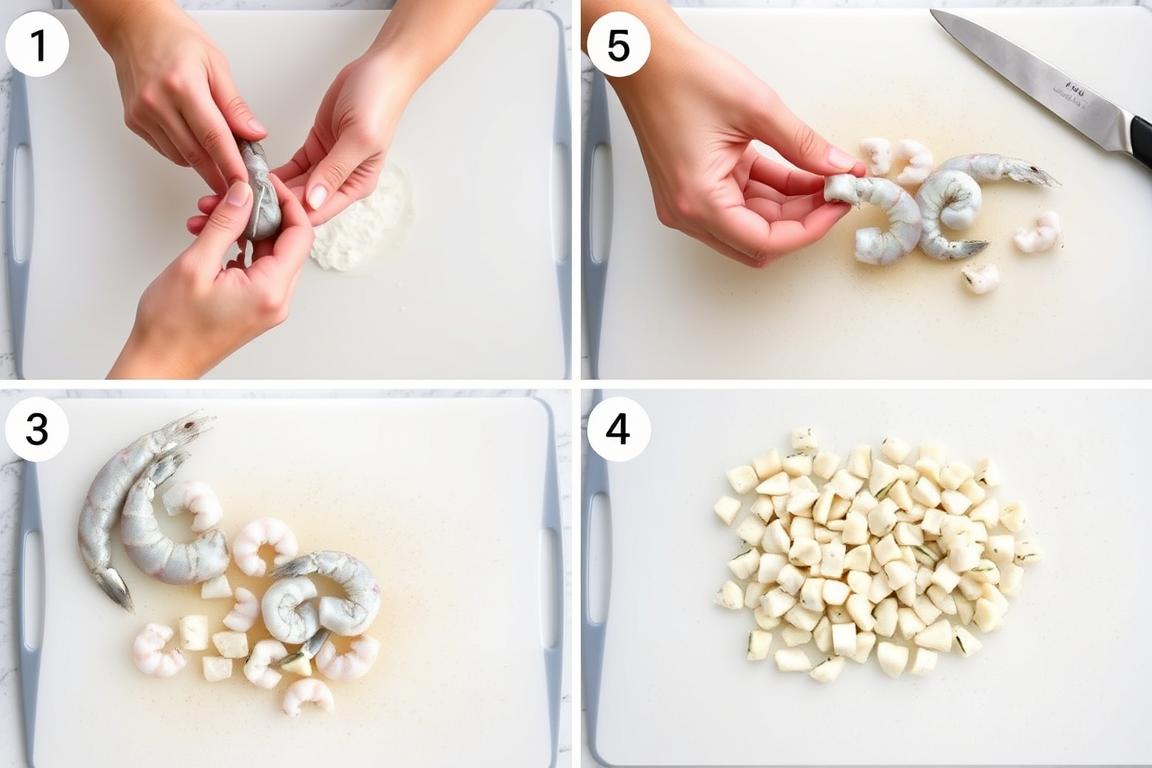
Proper preparation is crucial when feeding shrimp to your koi. Following these steps will ensure the shrimp is safe and appropriately sized for your fish.
- Clean thoroughly – Rinse fresh or thawed frozen shrimp under cold water to remove any potential contaminants.
- Remove shells and tails – Koi cannot digest hard shells, so peel the shrimp completely. The shells can cause digestive issues and potentially harm your fish.
- Devein if necessary – For larger shrimp, remove the dark vein running along the back, as it contains waste material.
- Cut into appropriate sizes – Dice the shrimp into small pieces that match the size of your koi’s mouth. Smaller koi need smaller pieces to prevent choking.
- Avoid seasonings – Never add salt, spices, or any other seasonings to shrimp intended for koi. These additives can be harmful to your fish.
For dried shrimp, check the size before feeding. If the pieces are too large for your koi, break them into smaller bits. Soak dried shrimp briefly in pond water before feeding to soften them, making them easier for your koi to eat and digest.
Important: Never feed cooked shrimp to your koi. Cooking changes the protein structure and adds oils or seasonings that can be harmful to fish. Always use raw shrimp for your koi’s treats.
How to Introduce Shrimp to Your Koi’s Diet
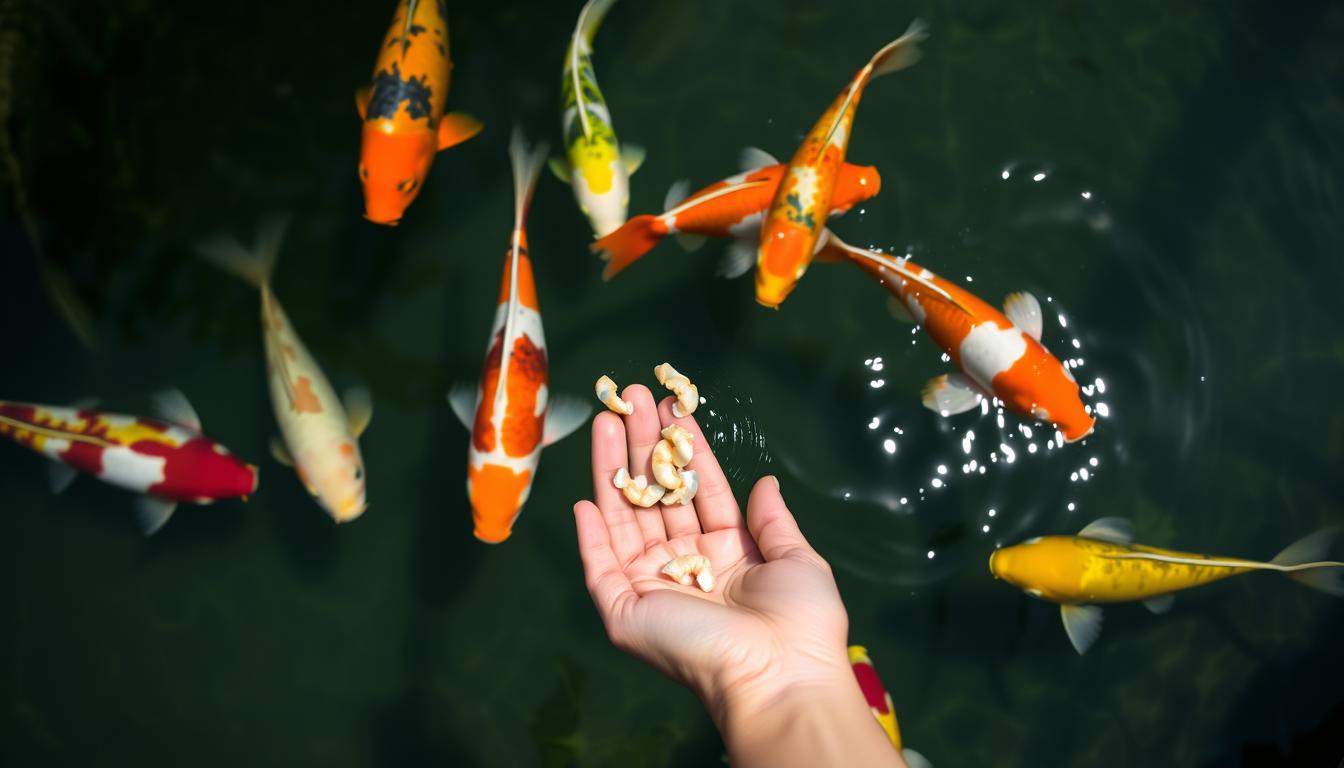
Introducing any new food to your koi’s diet should be done gradually. This allows their digestive systems to adjust and lets you monitor for any adverse reactions. Here’s how to safely add shrimp to your koi’s menu:
Start Small and Observe
Begin with a small amount of shrimp, offering just a few pieces to see how your koi respond. Watch for their interest level and observe their behavior after eating. Most koi will eagerly accept shrimp, but individual preferences can vary.
Feeding Frequency
Shrimp should be offered as a treat, not as a staple food. Limit shrimp feeding to 1-2 times per week, especially when first introducing it. This prevents overfeeding of protein-rich foods, which can cause water quality issues in your pond.
Best Feeding Practices
- Feed only what your koi can consume in 5 minutes
- Remove any uneaten shrimp pieces from the pond
- Feed during warmer months when koi metabolism is higher
- Avoid feeding shrimp when water temperatures drop below 50°F (10°C)
- Monitor water quality more frequently when introducing new foods
If you notice any signs of distress, unusual swimming patterns, or changes in appetite after introducing shrimp, discontinue feeding it and consult with a koi health specialist.
Having trouble with your koi’s diet?
Our koi experts can help you create a balanced feeding plan tailored to your fish and pond conditions.
Potential Risks and How to Avoid Them
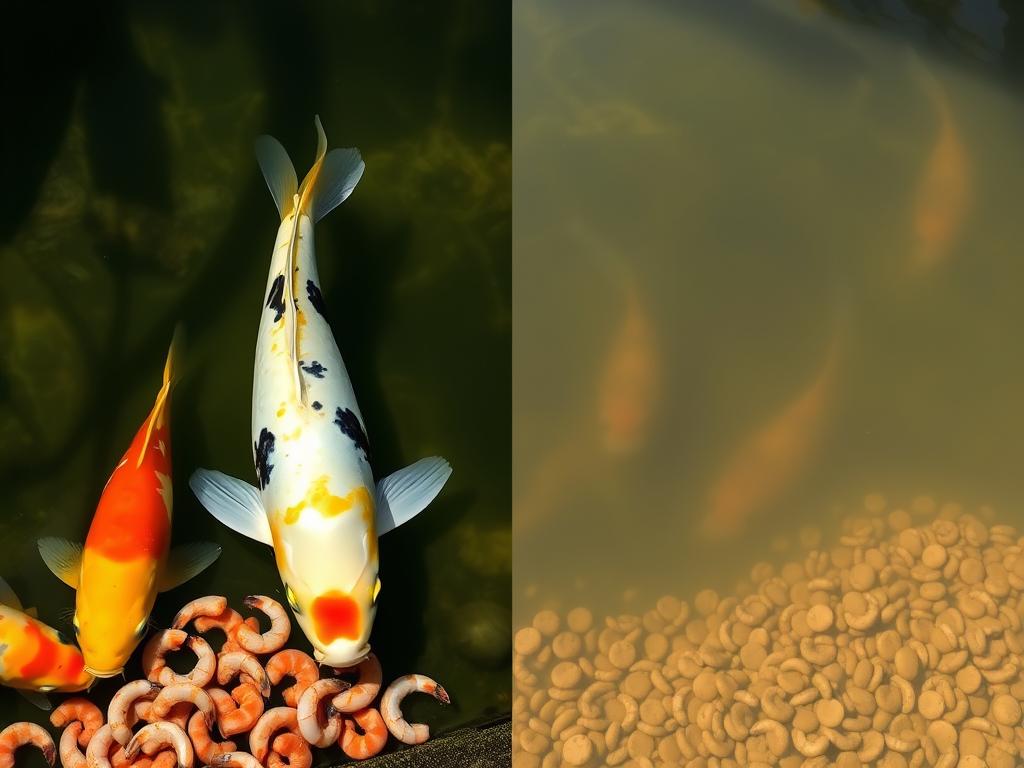
Benefits of Feeding Shrimp
- High-quality protein source
- Enhances color development
- Contains essential nutrients
- Provides dietary variety
- Highly palatable to most koi
Potential Risks
- Overfeeding can pollute water
- Improper preparation may cause choking
- Low-quality sources may contain contaminants
- Excessive protein can strain koi’s digestive system
- Uneaten portions decay and affect water quality
Water Quality Concerns
One of the biggest risks when feeding protein-rich foods like shrimp is the potential impact on water quality. Protein breaks down into ammonia, which can quickly become toxic to fish if filtration is inadequate. Always ensure your pond has proper filtration and aeration before introducing protein-rich treats.
Regular water testing becomes even more important when adding new foods to your koi’s diet. Monitor ammonia, nitrite, and nitrate levels closely, especially in the days following shrimp feeding.
Sourcing Safe Shrimp
The source of your shrimp matters significantly. Wild-caught shrimp or those from unknown sources may contain parasites or contaminants that could harm your koi. Always purchase shrimp from reputable suppliers, preferably those specifically selling fish food or human-grade seafood.
Avoid using shrimp that has been treated with preservatives, antibiotics, or other chemicals. These additives can be harmful to koi and may accumulate in your pond over time.
Seafood Alternatives to Shrimp for Koi
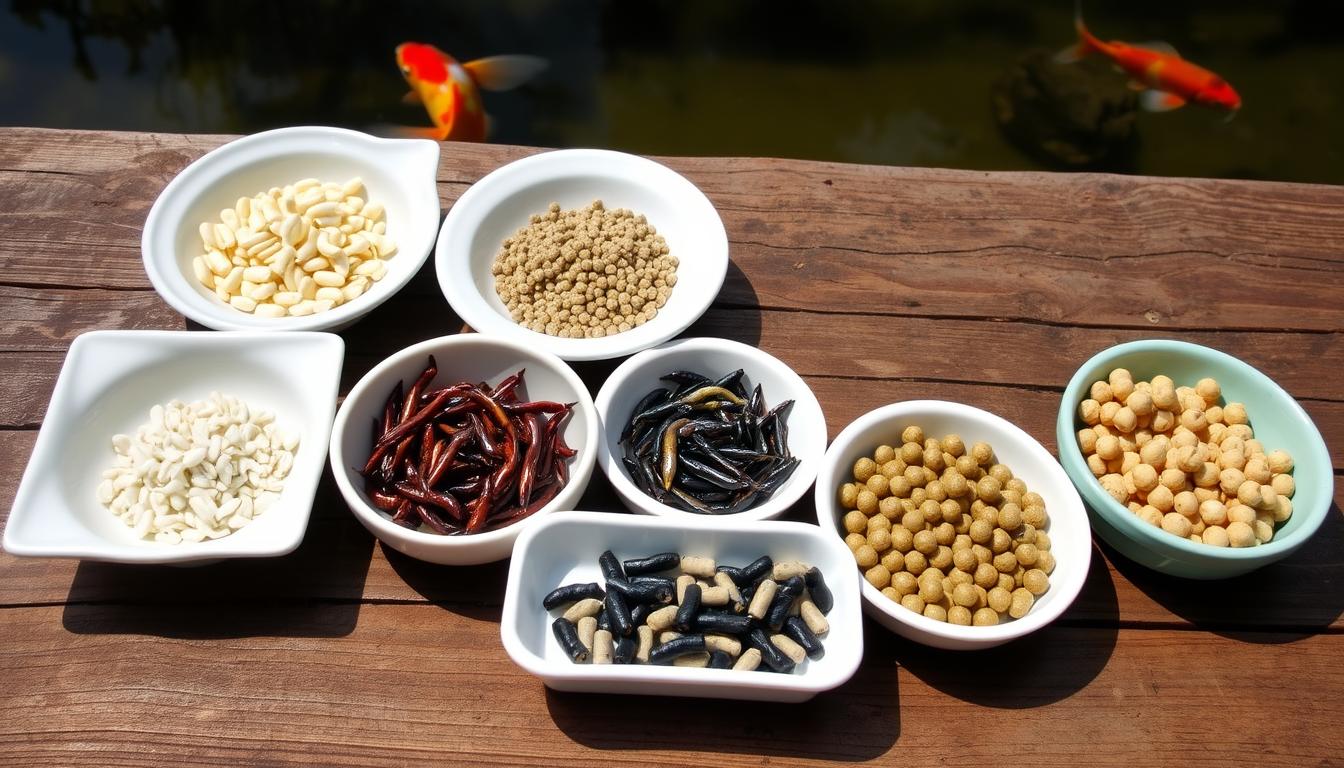
If you’re looking to diversify your koi’s diet beyond shrimp, several other seafood options can provide similar nutritional benefits:
| Seafood Type | Nutritional Benefits | Preparation Notes | Feeding Frequency |
| Krill | High in protein and color-enhancing carotenoids | Available freeze-dried, feed as is or soak briefly | 1-2 times weekly |
| Daphnia | Good protein source, easily digestible | Feed live, frozen, or freeze-dried | 2-3 times weekly |
| Bloodworms | High protein, iron-rich | Available frozen or freeze-dried | 1-2 times weekly |
| Clams | Rich in minerals and protein | Remove from shell, chop finely | Once weekly |
| Silkworm Pupae | High protein, good fat content | Feed dried or rehydrated | 1-2 times weekly |
Rotating between these options provides a well-rounded diet that prevents nutritional deficiencies and keeps your koi interested in their food. As with shrimp, introduce each new food gradually and monitor your fish’s response.
“A varied diet is one of the most important factors in raising healthy, vibrant koi. Different foods provide different nutrients, and rotation prevents both boredom and potential nutritional gaps.”
Frequently Asked Questions About Feeding Shrimp to Koi
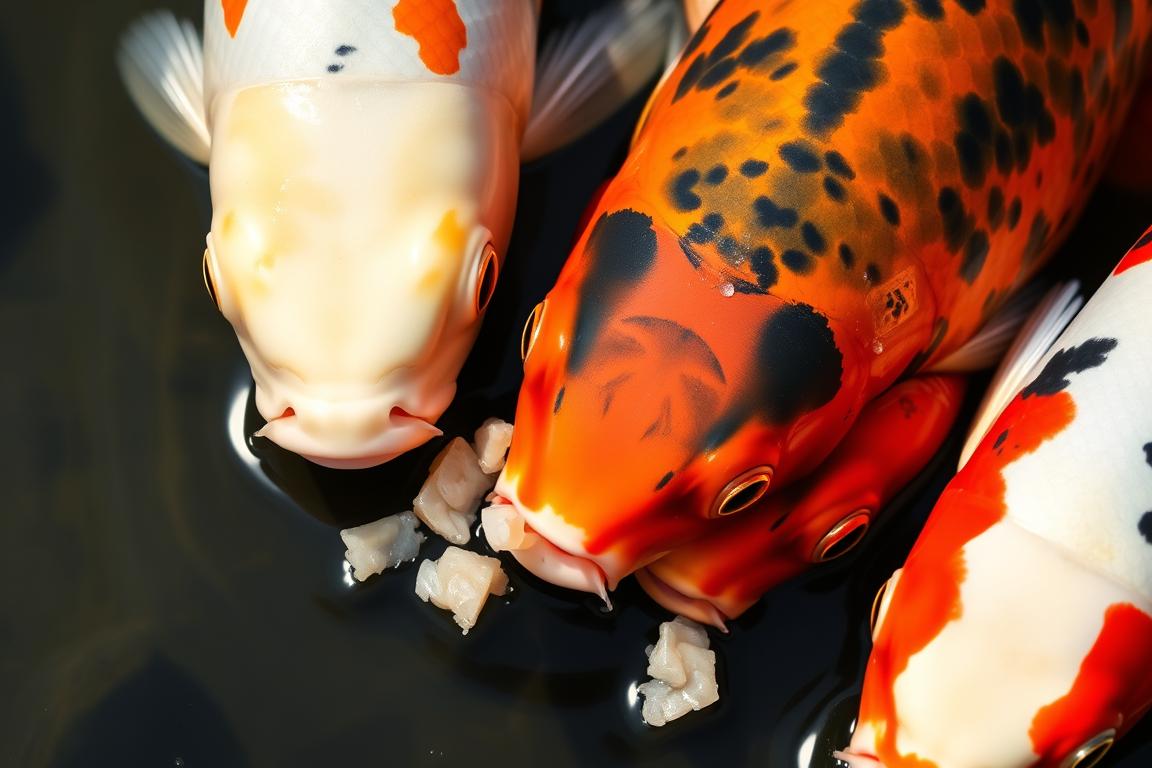
Can baby koi eat shrimp?
Yes, baby koi (known as fry) can eat shrimp, but it must be prepared differently than for adult koi. For young koi under 3 inches, shrimp should be minced into very tiny pieces or even pureed. Alternatively, you can use commercially available powdered shrimp designed for fry. Start with minimal amounts and ensure the pieces are small enough to prevent choking.
How often can I feed shrimp to my koi?
Shrimp should be offered as a treat rather than a staple food. For most koi ponds, feeding shrimp 1-2 times per week is sufficient. During colder months when koi metabolism slows, reduce or eliminate shrimp feeding entirely. Always monitor water quality when feeding protein-rich foods like shrimp, as they can impact ammonia levels more significantly than plant-based foods.
Can koi eat cooked shrimp?
No, koi should not be fed cooked shrimp. Cooking alters the protein structure and typically involves adding oils, salt, or other seasonings that can be harmful to koi. Additionally, cooked shrimp breaks down differently in water and can more quickly pollute your pond. Always feed raw, properly cleaned and prepared shrimp to your koi.
Have more questions about koi nutrition?
Join our community of koi enthusiasts where you can ask questions and share experiences about feeding and caring for your fish.
Conclusion: Enriching Your Koi’s Diet with Shrimp
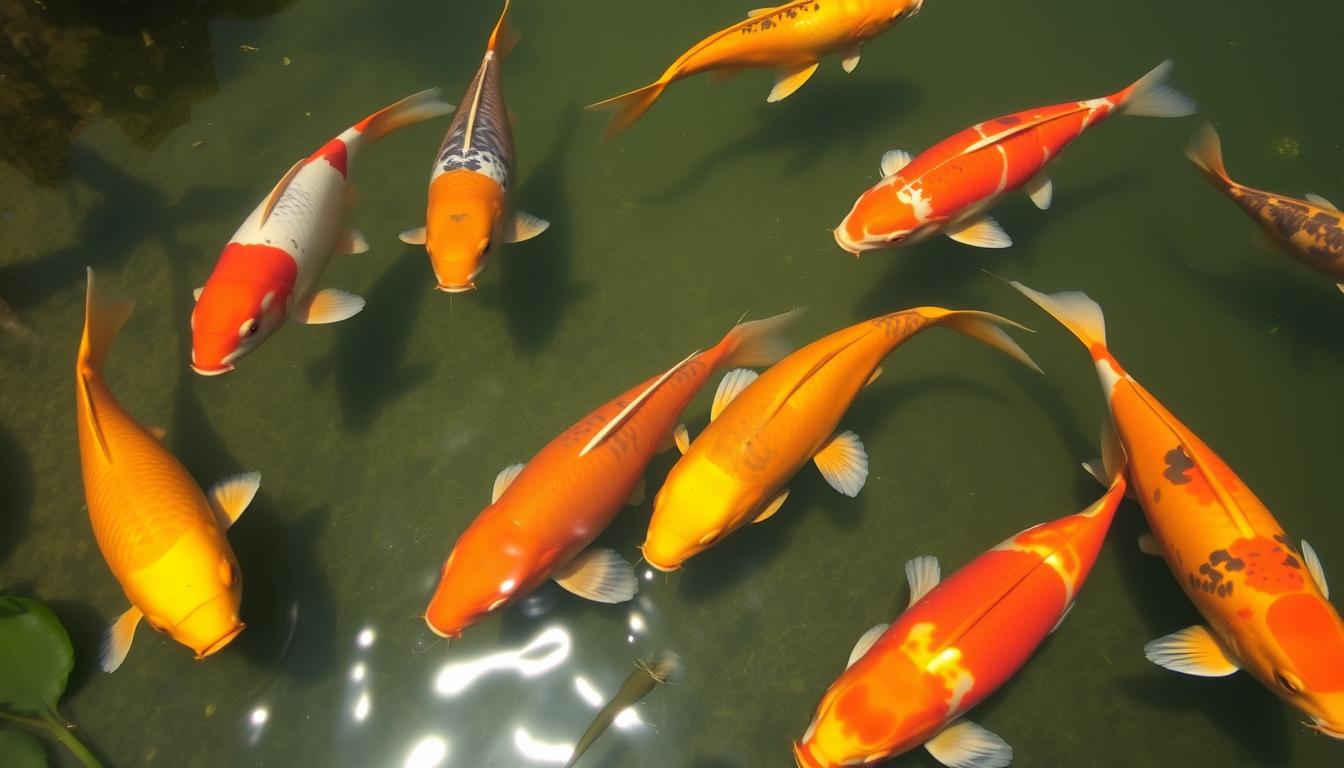
Shrimp can be an excellent addition to your koi’s diet when prepared and offered properly. This protein-rich treat provides essential nutrients that support growth, enhance coloration, and contribute to overall health. By following the guidelines in this article, you can safely introduce shrimp to your koi while avoiding potential risks.
Remember that variety is key to a balanced diet for koi. While shrimp offers valuable nutrition, it should be part of a diverse feeding regimen that includes quality commercial koi food as the staple, supplemented with various treats like fruits, vegetables, and other protein sources.
Monitor your koi’s response to new foods, maintain proper water quality, and adjust feeding based on seasonal changes in metabolism. With thoughtful care and attention to their dietary needs, your koi will thrive with vibrant colors and healthy activity for many years to come.
